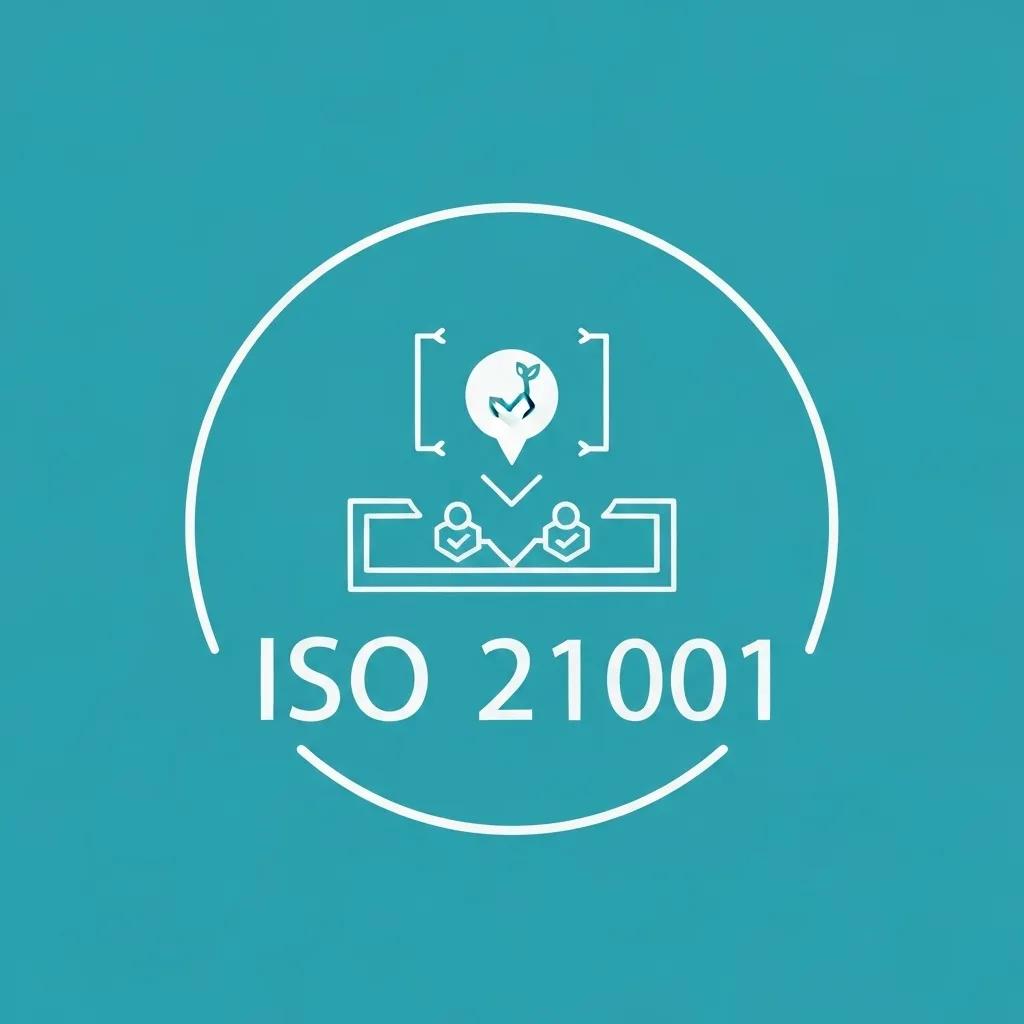Understanding Time and Resources for ISO 21001 Success

Estimating Time and Resources for ISO 21001 Implementation
Educational organisations often underestimate how much time and resources are needed to implement ISO 21001 effectively, exposing projects to delays and budget overruns. This article explains the ISO 21001 standard, maps the phased implementation journey, outlines typical durations, details human and financial commitments, compares ISO 21001 with ISO 9001, addresses common challenges and presents expert strategies. Readers will discover core principles, step-by-step guidance, resource breakdowns and real-world solutions. IT directors, business leaders and founders will gain actionable insights to plan and budget for a successful Educational Organisation Management System (EOMS).
The article covers:
- Definition and importance of ISO 21001
- Key implementation phases
- Timeline estimates and acceleration tips
- Resource allocation for human, financial and technological needs
- ISO 21001 vs ISO 9001 comparison
- Common hurdles and mitigation strategies
- How Stratlane supports certification
What is ISO 21001 and Why is it Essential for Educational Organisations?
ISO 21001 is a specialised quality management standard that provides requirements for an Educational Organisation Management System (EOMS), designed to enhance learner satisfaction through consistent educational processes. By embedding learner-centred principles into administrative and teaching activities, ISO 21001 improves educational delivery and institutional credibility. Implementing this standard ensures accountability, continuous improvement and alignment with stakeholder expectations, positioning organisations for long-term success.
What are the core principles of ISO 21001?

Before implementation, organisations should internalise five core principles that guide an EOMS:
- Learner-Centred Approach: Places learner needs and satisfaction at the centre of educational design and delivery.
- Leadership Involvement: Requires active engagement from executive leadership to drive policy and resource decisions.
- Process Orientation: Standardises educational processes to reduce variability and enhance reproducibility.
- Risk-Based Thinking: Identifies and mitigates risks that could compromise learning outcomes or operational stability.
- Continuous Improvement: Establishes feedback loops and performance metrics to foster ongoing enhancements.
Each principle underpins the EOMS framework and ensures that learners, staff and stakeholders remain aligned with quality objectives.
How does ISO 21001 improve educational quality and learner satisfaction?
ISO 21001 improves educational quality by defining clear learning objectives, measuring achievement and using feedback to refine curricula and support services. This mechanism integrates evaluation metrics—such as learner feedback, assessment results and resource utilisation—to drive targeted improvements. For example, regular satisfaction surveys inform teaching adjustments, which in turn boost engagement and retention rates. Establishing these feedback processes lays the groundwork for continuous quality improvement across academic programmes.
Why should educational organisations consider ISO 21001 certification?
Organisations seek ISO 21001 certification to demonstrate commitment to educational excellence, satisfy regulatory and funding requirements, and differentiate themselves in a competitive landscape.
Certification provides third-party validation of process integrity, which builds trust with students, parents and accrediting bodies. Achieving this credential often leads to enhanced reputation, improved stakeholder confidence and better alignment with international best practices, all of which support strategic growth and learner success.
Benefits of ISO 21001 for Educational Institutions - in English
ISO 21001 certification empowers educational organisations to deliver more effective and efficient educational services, offering a customized experience to every learner, while supporting people with special educational needs. This standard also helps institutions ensure learners receive the desired quality of education, improving their productivity, safety, and well-being.
TÜV SÜD, ISO 21001 Certification & Auditing (n.d.)
PECB, Benefits of ISO 21001 Educational Organizations Management (n.d.)
This research highlights the advantages of ISO 21001 certification for educational institutions.
What are the Key Steps to Implement ISO 21001 Successfully?
A structured phased approach ensures clarity and control during ISO 21001 implementation. Organisations progress through gap analysis, documentation, process rollout, internal audits and management reviews to achieve certification.
How is gap analysis conducted for ISO 21001?
Gap analysis identifies discrepancies between current management practices and ISO 21001 requirements. Organisations typically:
- Collect and review existing policies, procedures and records.
- Map each ISO 21001 clause to current practices.
- Highlight missing or incomplete processes.
- Prioritise corrective actions with timelines.
- Assign responsibilities for remediation.
This systematic assessment establishes a clear project roadmap and resource plan, guiding subsequent documentation and implementation activities.
Steps to Achieve ISO 21001 Certification - in English
A structured, phased approach is essential for ISO 21001 implementation, including gap analysis, documentation, process rollout, internal audits, and management reviews. These steps ensure clarity and control throughout the certification process.
CertPro, ISO 21001 Certification (n.d.)
Meegle, ISO Certification Timeline (n.d.)
TUC, Step-by-Step Guide to Implementing ISO 21001:2018 (n.d.)
This research outlines the key steps involved in achieving ISO 21001 certification.
What documentation is required for ISO 21001 implementation?
Successful ISO 21001 implementation relies on comprehensive documentation covering policies, processes and records. Essential documents include:
- EOMS Scope and Policy: Defines the boundaries and objectives of the management system.
- Procedure Manuals: Describes process workflows, roles and responsibilities.
- Records of Learning Objectives and Outcomes: Tracks curriculum design and achievement metrics.
- Risk and Opportunity Registers: Logs identified risks, mitigation actions and monitoring plans.
- Internal Audit and Review Reports: Documents audit findings and improvement decisions.
Establishing these templates and records creates transparency and traceability, supporting audit readiness and process consistency.
How do internal audits and management reviews support ISO 21001?
Internal audits and management reviews act as control points that validate EOMS performance and regulatory compliance. Internal audits evaluate process effectiveness, identify nonconformities and recommend corrective actions. Management reviews assess audit outcomes, resource adequacy and strategic alignment, producing decisions on system improvements and resource reallocation. These loop-backs ensure that the EOMS evolves in response to organisational needs and stakeholder feedback.
How Long Does ISO 21001 Certification Typically Take?

Certification timelines for ISO 21001 vary according to organisational complexity, existing quality systems and resource allocation. Typical durations span from six months for smaller institutions to 18 months for large, multi-site operations.
What factors influence the ISO 21001 implementation timeline?
- Organisational size and structure
- Maturity of existing quality management systems
- Complexity of educational programmes and delivery modes
- Availability of skilled project personnel
- Level of leadership engagement
- Scope of required documentation and process redesign
These variables interact to accelerate or extend project phases, making early planning and resource commitment essential.
What are typical ISO 21001 certification durations by organisation type?
| Organisation Type | Typical Duration | Key Considerations |
|---|---|---|
| Single-site College | 6–9 months | Smaller scope, fewer processes |
| Multi-campus University | 9–12 months | Complex structures, varied sites |
| Online Learning Platform | 6–10 months | Digital tools, remote delivery |
| Large Vocational Consortium | 12–18 months | Multiple programmes and audits |
These estimates guide budgeting and scheduling, though actual timelines depend on specific context and resource availability.
How can educational organisations accelerate the ISO 21001 certification process?
Organisations can shorten timelines by:
- Engaging experienced consultants to streamline gap analysis and documentation.
- Conducting parallel training sessions for staff to build internal auditing capacity.
- Leveraging digital platforms for document control and process tracking.
- Assigning a dedicated project manager to maintain momentum.
- Prioritising high-impact corrective actions to secure early wins.
Proactive coordination and expert support drive faster EOMS readiness and audit success.
What Resources are Required for Effective ISO 21001 Implementation?
Implementing ISO 21001 demands a balanced allocation of human, financial and technological resources to ensure process integrity and certification readiness.
What human resources and roles are essential for ISO 21001?
A successful ISO 21001 project team typically includes:
- Project Leader: Oversees planning, resourcing and stakeholder coordination.
- Internal Auditors: Conduct process reviews and compliance checks.
- Process Owners: Define and maintain specific educational processes.
- Quality Manager: Manages documentation, training and corrective actions.
- Support Staff: Handle record-keeping, data entry and reporting tasks.
Clarifying these roles ensures accountability and drives consistent progress toward certification goals.
How should educational organisations budget for ISO 21001 certification costs?
Budget planning must consider direct and indirect expenses:
- Consultancy Fees: Expert guidance for gap analysis and documentation.
- Training and Workshops: Staff certification and internal auditor courses.
- Audit and Certification Fees: External auditor charges and surveillance audits.
- Technology Investment: Document management systems, audit software.
- Internal Labour: Project team hours and process redesign efforts.
Allocating funds across these categories provides a realistic financial roadmap and avoids funding shortfalls during critical phases.
What technological and material resources support an effective Educational Organisation Management System (EOMS)?
An EOMS relies on digital and physical tools to maintain process consistency:
- Document Control Software: Enables version tracking and role-based access.
- Learning Management Systems: Integrates educational content with EOMS records.
- Audit Tracking Platforms: Automates audit schedules, findings and corrective actions.
- Communication Tools: Supports stakeholder engagement and training delivery.
- Office Infrastructure: Supplies for record-keeping, meeting rooms and presentation facilities.
Establishing this infrastructure underpins compliance, transparency and efficient process management.
How Does ISO 21001 Compare to ISO 9001 for Educational Institutions?
ISO 9001 is a generic quality management standard, while ISO 21001 specialises in educational contexts. Understanding their relationship helps institutions decide on single or dual certification.
What are the main differences between ISO 21001 and ISO 9001?
| Standard | Focus Area | Applicability |
|---|---|---|
| ISO 9001 | General quality management processes | Any organisation |
| ISO 21001 | Learner-centred educational management | Educational organisations |
| ISO 9001 | Customer satisfaction through product/service quality | Broad industries |
| ISO 21001 | Learner satisfaction through learning outcomes | Schools, universities, training |
While both share process-based approaches, ISO 21001 extends requirements for curriculum design, learner evaluation and educational resource management.
Why might an educational organisation need both ISO 21001 and ISO 9001 certifications?
Obtaining both certifications offers complementary benefits:
- Holistic Quality Assurance: ISO 9001 covers general quality processes; ISO 21001 adds learner-specific requirements.
- Market Advantage: Dual certification signals robust commitment to quality and education excellence.
- Regulatory Alignment: Meets broader industry standards and specialised educational mandates.
- Risk Mitigation: Addresses operational and pedagogical risks through two validated frameworks.
Together, they reinforce process discipline, stakeholder confidence and continuous improvement across all functions.
How do ISO 21001 and ISO 9001 overlap in quality management principles?
- Documented Processes: Clear procedures and record-keeping.
- Internal Audits: Systematic reviews to verify compliance.
- Management Review: Leadership oversight and strategic direction.
- Corrective Actions: Identifying nonconformities and implementing fixes.
- Continuous Improvement: Monitoring performance and pursuing enhancements.
This overlap simplifies dual implementation by leveraging common methodologies and shared documentation practices.
What Challenges are Common in ISO 21001 Implementation and How Can They Be Overcome?
Organisations often face resource constraints, documentation overload and stakeholder resistance when adopting ISO 21001. Recognising these hurdles early enables targeted solutions.
What are typical hurdles during ISO 21001 certification?
- Limited Internal Expertise: Lack of experience in educational quality standards.
- Documentation Overload: Generating and maintaining extensive records.
- Stakeholder Engagement: Securing buy-in from faculty, administrators and learners.
- Resource Allocation: Balancing project needs with day-to-day operations.
- Audit Preparedness: Ensuring readiness for external assessments.
Challenges in Implementing ISO 21001 - in English
Common obstacles during ISO 21001 certification include limited internal expertise, documentation overload, stakeholder engagement issues, resource allocation challenges, and audit preparedness concerns. Addressing these hurdles early enables targeted solutions and smoother adoption.
Nexus Consultancy, 6 Common Challenges in Implementing an ISO Management System and How to Overcome Them (2024)
Edumentor Solutions, Unlocking the Potential of ISO 21001 in School Management: Opportunities, Challenges, and Aspirations (n.d.)
This research identifies common challenges faced during ISO 21001 implementation.
What practical solutions help overcome ISO 21001 implementation challenges?
- Expert Partnership: Engage consultants to transfer expertise and accelerate processes.
- Modular Documentation: Develop template-based records to reduce repetitive work.
- Change Management: Conduct awareness sessions and stakeholder workshops.
- Phased Rollout: Align implementation with academic calendars to minimise disruption.
- Continuous Training: Certify internal auditors and process owners for sustained oversight.
These solutions foster smoother adoption, maintain operational continuity and reinforce a culture of quality.
How Does Stratlane Support Educational Organisations in ISO 21001 Implementation?
Stratlane combines deep ISO expertise with a tailored methodology to guide educational institutions through every phase of ISO 21001 certification. This service reduces risk, accelerates readiness and embeds sustainable quality practices.
What consulting and training services does Stratlane offer for ISO 21001?
- Gap Analysis Workshops: Rapidly assess current practices against ISO 21001 requirements.
- Documentation Templates: Ready-to-use policies, procedures and records tailored for education.
- Internal Auditor Training: Equip staff with auditing skills and certification capacity.
- Leadership Coaching: Align leadership teams on strategic quality objectives.
- Mock Audits: Simulate certification audits to identify areas for improvement.
This end-to-end approach ensures that organisations build durable EOMS capabilities and confidence for external assessments.
How does Stratlane streamline the ISO 21001 certification process?
- Automated document control and version tracking
- Online training modules to minimise scheduling conflicts
- Dedicated project managers to coordinate activities and communications
- Custom dashboards for real-time progress monitoring
- Direct liaison with accreditation bodies for efficient audit scheduling
This streamlined workflow cuts average timelines by up to 30%, enabling institutions to achieve certification with minimal disruption.
Where can educational organisations find case studies of successful ISO 21001 implementations?
Educational leaders can explore real-world success stories on Stratlane’s website, including detailed examples of timeframes, resource allocations and measurable improvements in learner satisfaction. Case studies demonstrate how institutions achieved certification in six to twelve months and realised tangible benefits such as higher retention rates and operational efficiencies.
Visit ISO 21001 for Educational Organizations to review these case studies and learn from peer experiences.
Through these documented outcomes, organisations gain practical insights and benchmarks for their own ISO 21001 journeys.
Institutions that plan thoroughly, assign clear roles and leverage expert support can achieve ISO 21001 certification within expected timeframes, optimise resource investment and elevate educational quality.
Contact Stratlane for a tailored assessment and chart a clear path to EOMS excellence.